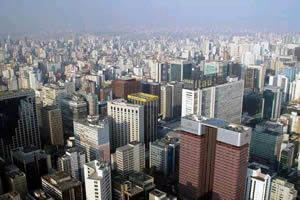Heat Island is a climatic phenomenon that occurs from the rise in temperature in an urban area compared to a rural area, for example. This means that in cities, especially in large ones, the temperature is higher than in peripheral areas, literally consolidating an island (climatic).
The temperature fluctuation between the center of a big city and a rural area can vary between 4°C, 6°C or even 11°C; which provides many inconveniences to the population due to the inconveniences that excessive heat causes, not to mention that it causes a significant increase in the consumption of electricity, used to run refrigerators (air conditioning), mainly to air-condition homes, schools, universities, businesses and industries.

Heat Island is a typical phenomenon in large urban centers.
The heat island can be seen in day and night periods, but the peak of the temperature difference between urban and rural areas happens at dusk, as the rural area cools faster than the urban area, where walls, sidewalks, asphalts and all kinds of buildings receive light and heat from the sun during the day and this is retained for longer, providing the temperature difference between the areas in question.
In rural and forestry areas, the vegetation cover enables the process of evaporation and evapotranspiration, softening temperatures, which does not happen in large cities that are waterproofed and uncoated vegetable.
By Eduardo de Freitas
Graduated in Geography
Source: Brazil School - https://brasilescola.uol.com.br/geografia/ilha-de-calor.htm
